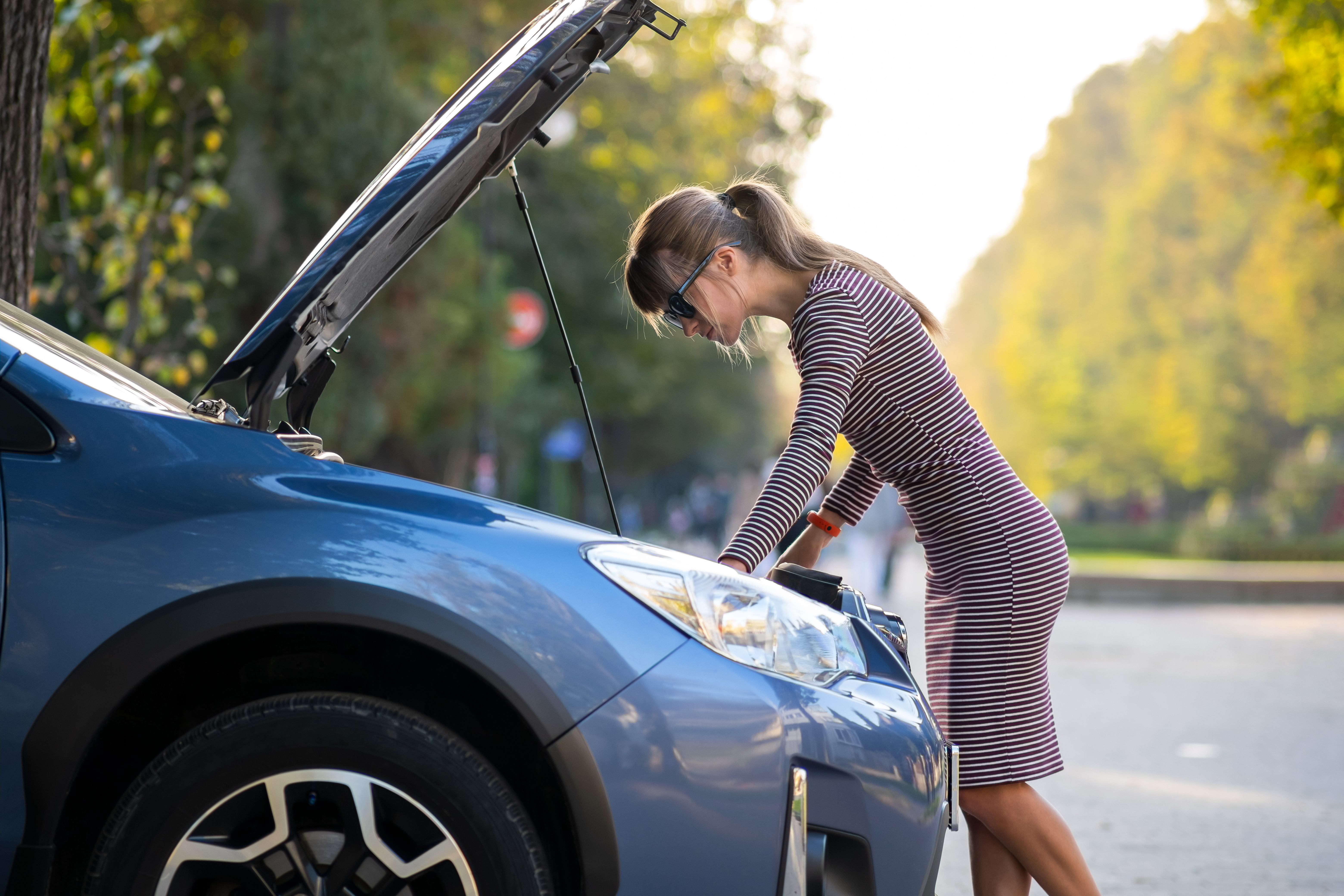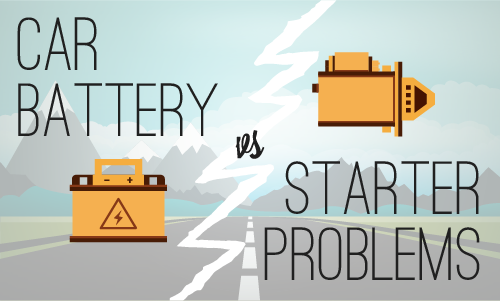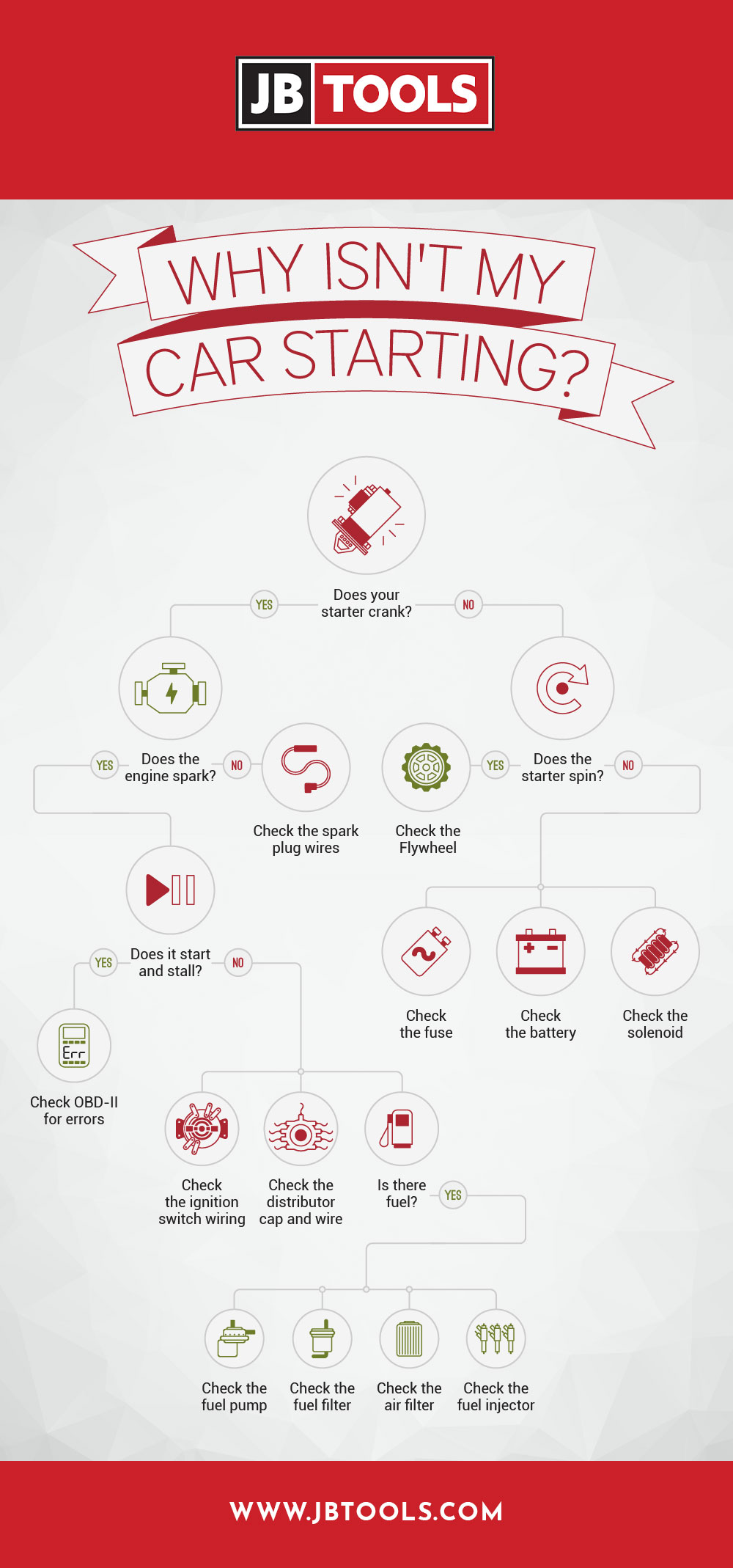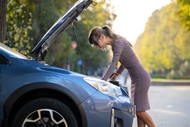Help! Why Won't My Car Start?
3rd May 2016

While modern cars may be a marvel of engineering, their complexity means hundreds of potential problems. At any moment, something could go wrong. But a car that won’t start? That’s perhaps one of worst problems you’ll encounter. It can also be one of the most difficult to diagnose. Many reasons a car won’t start is connected directly to the starter. Clicking sounds are common here, and automobile starter problems can be connected to any number of things. However, car starter prices can be fairly high, so it's best to determine if there are there are other issues involved before having a mechanic replace the starter.
| Engine Won't Crank | Engine Cranks, But Car Won't Start | Engine Has Fuel and Sparks, But Won't Start | Engine Cranks and Sparks, But Won't Start |
Car Battery vs. Starter Problems

It’s important to note the differences between when your car’s battery is at fault, and when it’s the starter that is keeping your car from starting. Automobile starter problems are not always the reason why a car won’t start. Sometimes it really is just the car battery. Car batteries are an essential part of starting the car. The battery is designed to provide 12.6 volts of power, up to 13.8 volts when the battery is good. The battery is rechargeable, and once it has been used to start the engine, all power control switches over to the alternator. The alternator keeps power generation going and recharges the battery. If your battery isn’t working, you’ll know it right away. Your car won’t start at all, and it may not even turn over or produce any noise. The battery and the starter are not the same thing, however. You may even have car alternator problem if your battery just isn’t starting.
Your car’s starter is operated when you turn your key in the ignition. The car starter is designed to draw huge bursts of power from the battery, which it uses to start the engine. The starter turns the engine over so that it can get a good, compressed mixture of fuel and air. This process happens very quickly, with the starter only operating during the second it takes to complete the process. If a starter is not working, but the battery is in good condition, there is always some noise involved that will indicate to you that something has gone wrong.
How to Diagnose Car Starter Problems
Whether you’re having Honda starter problems, Toyota starter problems, or problems with just about any car make or model, diagnosing the issues could help you save money.
Engine Cranking Problems
![]() There are a number of problems that can exist that impede proper engine cranking. It’s important to note, however, that a failure to “crank” and a failure to “start” are two different things. Cranking problems relate to your starter’s ability to turn properly. Here are some common problems with engine cranking:
There are a number of problems that can exist that impede proper engine cranking. It’s important to note, however, that a failure to “crank” and a failure to “start” are two different things. Cranking problems relate to your starter’s ability to turn properly. Here are some common problems with engine cranking:
1. A bad solenoid
All engine starters have a device called a solenoid. This electromagnetic device helps complete the otherwise open circuit, giving the starter motor its required power. If the solenoid fails to operate correctly, it may prevent power from getting to the starter motor.
Fix: To fix this problem, may need to have the solenoid replaced.
2. Blown fuses
Fuses help regulate power in your car. If your fuses are blown, your car’s starter may have problems receiving power correctly and you may have issues starting the car.
Fix: Check the fuses in your engine’s fuse box. Blown fuses will have burn marks on them clearly indicating a problem. Replace the fuses.
3. Bad battery
As stated earlier, a dead battery or one with extremely low charge will not send power to the starter. In this case, cranking will be impossible as the starter will not turn fast enough to produce the correct level of compression in the engine.
Fix: Check the battery connections. Clean any residue, oxidation or acid from the battery connectors. Change out any frayed or damaged wires. Recharge the battery. If the voltage remains low, change the battery.
4. Damaged or broken flywheel
The flywheel at the end of the starter engine is a gear that helps crank the engine. It is noticeable as it is a large wheel with a lot of ridges around the edges. Chewed up or frayed edges on the flywheel could be preventing the starter motor from cranking the engine.
Fix: The flywheel will need to be replaced.
Engine Cranks, But Car Won’t Start
![]()
If your engine is cranking, but not starting, there are several problems that could be causing this issue:
1. Bad ignition coil
The ignition coil is what converts the electricity from your car’s battery into the higher voltage needed to create a spark and start ignition. If the coil has failed, your engine may crank correctly, but the engine will not start due to the missing spark.
Fix: Check the spark plug wires. Bad wires can cause an ignition coil to fail. Alternatively, too much voltage through the coil may have burned it out. In this case, you will need to replace the coil.
2. Bad ignition switch
The ignition switch is the part of the ignition everyone is familiar with: the switch controlled by the turn of your key. If this switch has gone bad, your car may not start.
Fix: First, check the wiring. There may simply be connections that are not operating properly. However, if the wires are fine, you may need to replace the ignition switch. Ignition switches can be very expensive to replace. Ignition switches can get broken if your keychain is too heavy, so it’s best to avoid having a heavy keychain attached to your key.
3. A faulty crankshaft position sensor
The crankshaft position sensor in your car continually checks the crank speed. If the sensor is misreading the speed, it may be telling your on-board computer incorrect information, leading to a situation where the car should be starting, but is failing to do so. Fuel injection and sparking are related to information the sensor receives and relays to the computer. If the sensor is wrong, your car will not deliver fuel or the required spark at the correct time.
Fix: Use an OBD-II device to determine if the sensor is misreading information. If it is indeed the crank sensor, you will need to replace it.
4. On-board computer error
Occasionally, the on-board computer may simply be misreading information. Modern cars use the on-board computer to correctly time the starter with the fuel injection and spark. If the on-board computer is misreading this information, it may result in a car that cranks, but refuses to start.
Fix: Use an OBD-II device and your user manual to check for errors. If the computer is sending back error codes, have it diagnosed by a mechanic.
Engine Has Fuel and Sparks, But Won’t Start
![]()
If your car has fuel and is sparking correctly, there may be several issues preventing the car from starting:
1. Clogged air filter
This is a simple fix but one that is easily overlooked. If the air filter is dirty and clogged, it may be preventing air from getting into the system to help start the ignition.
Fix: Clean or replace the air filter.
2. Clogged fuel filter
If the fuel filter is clogged, the fuel will not be able to get through the last filter.
Fix: Clean or replace the fuel filter
3. Broken or clogged fuel pump
If the fuel pump is broken, you will not be able to pump fuel to spark ignition.
Fix: Clean the fuel pump suction strainer. If this does not work, you may need to replace the fuel pump.
4. Broken or clogged fuel injector
If the fuel injector is broken or clogged, it will not inject fuel into the system.
Fix: If you smell gasoline, you may have a leaky injector that needs immediate replacement. If not, it may be clogged and can easily be cleaned.
Engine Cranks and Sparks, But Won’t Start
![]()
If your engine cranks and sparks, but will not start, you may have issues with the mechanical distributor, the spark plug, or the wires.
1. Broken or faulty mechanical distributor
If you are getting a spark, but it is too weak, the mechanical distributor may be malfunctioning. There could be an issue with the distributor cap, faulty wires connecting to the distributor, or an issue with the rotor.
Fix: Check the distributor cap and wires. Fix or replace each of these as needed.
2. Faulty spark plug
The spark plug may be wired incorrectly or the wires may be failing. If there is a weak spark, you may need to change the entire spark plug.
Fix: Replace the spark plug. Alternatively, replace the spark plug wires if the wires are frayed or worn.
In case you ever get stranded with a dead battery, this awesome Rockford Pocket Jump Starter will be your lifesaver.
Sources:
http://www.howacarworks.com/basics/how-the-starting-system-works
https://en.wikipedia.org/wiki/Starter_%28engine%29
https://en.wikipedia.org/wiki/Automotive_battery
http://www.ifitjams.com/starting.htm
https://www.youtube.com/watch?v=1TK8NxqJ4MA
http://www.samarins.com/diagnose/index2.html
http://jalopnik.com/heres-how-you-diagnose-an-engine-that-wont-start-1717491831



